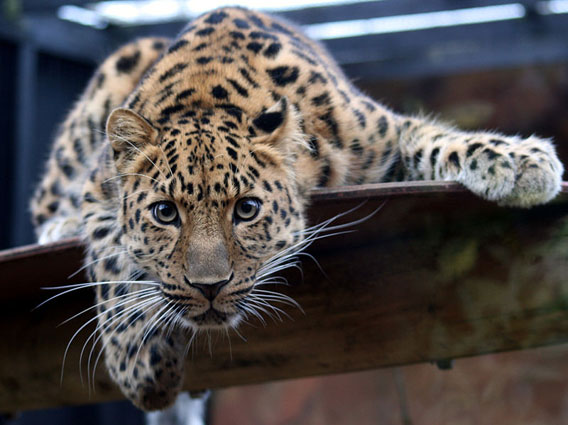Good news today about one of the world’s rarest mammals today: camera traps in China’s Wangqing Nature Reserve have captured the first proof of breeding Amur leopards in the country, according to the Wildlife Conservation Society (WCS). The photos show a mother Amur leopard with two cubs. A recent survey by WWF-Russia estimated the total wild population of Amur leopards at just 50 individuals, but that’s a population on the rise (from a possible nadir of 25) and expanding into long-unused territory.




“This incredible find is important for two reasons,” notes Joe Walston, WCS Executive Director for Asia Programs. “Firstly, it shows that our current efforts are paying off but, secondly, it shows that China can no longer be considered peripheral to the fate of both wild Amur leopards and tigers.”
Amur leopards and Amur—or Siberian—tigers (Panthera tigris altaica) share much of the same ecosystem, and both big cats hunt large large hoofed prey like deer and boar. Yet both species were also pushed to the very edge of extinction by decades of poaching, until conservationists and countries responded. Amur leopards are currently listed as Critically Endangered by the IUCN Red List, while Amur tigers are considered Endangered with around 360 animals surviving in the wild.
Amur leopards were only confirmed in China two years also via camera trap. The animals hadn’t been photographed in China for over 60 years, though scientists suspected the cats had begun to cross back and froth between China and Russia. The Amur leopard family caught on camera in China are just 30 kilometers (18 miles) from the larger population in Russia. The photos were taken as a part of a camera trap program run by the Forestry Bureau of Jilin Province.
“With a few key decisions by the government, China could become a major sanctuary for the species,” Walston
Amur leopards have the thickest coat of any leopard subspecies and are the only one adapted to a snowy, frigid climate. Aside from populations in Russia and China, a few leopards may still survive in North Korea. The animal remains imperiled by poaching, road building, logging, prey decline, and low genetic variability.
This article was written by Jeremy Hance for Mongabay.com







Leave a Reply